|
Should paper cash still exist?
A number of economists over at the Freakonomics podcast aren’t so sure. ROGOFF: It just plays a huge role in crime. There are lots of ways to conduct crime. You can use uncut diamonds; you can use gold coins; you can use cryptocurrencies. But you just can’t scale them the same way simply because these other things are not that easy to go spend in the economy. And yeah, crime would go on, people would do stuff. You don’t have to cut crime by 50 percent to make this a good idea. If you think of what we spend on cutting crime , cutting crime five percent is a big deal. And this is not a very complicated way to do it. Cash plays a very, very big role in just a whole range of crime: drugs, bribes, extortion, human trafficking, money laundering. DUBNER: Can you quantify the amount of global bribery every year? ROGOFF: You know, there aren’t great estimates. The World Bank braved estimates in the early 2000s and came up with a trillion dollars a year in global bribery. Another thing which is more complex, but if you look at illegal immigration, that’s really driven by cash — that employers are able to pay cash. That provides the magnet that brings people over. I favor much greater legal immigration by the way. But if a nation wants to control immigration, certainly cash plays a big role. Another problem exacerbated by cash: tax evasion. The U.S. tax gap – that’s the difference between what’s owed and what’s paid in – was, as of 2006, around $400 billion, or 2.7 percent of GDP. Every time someone gets paid in cash, whether they’re a drug dealer or a plumber or a restaurateur, that makes it a lot easier to avoid paying tax. The major counterargument is that of privacy. That is a tradeoff, of course, but one that seems hardly worth the immense benefits gained. I don’t engage in illegal activities and deterrents of this kind seem okay with me. Chalk it up as just one more personal cost that comes from living in society and the net benefits that entails.
1 Comment
Scott Sumner states:
Trump is the first post-modern candidate, the first to understand that truth is what the voters let you get aways with, and that the multiverse offers the possibility of achieving seemingly irreconcilable aims. That is in response to Trump simultaneously stating his plans to both cut taxes and keep them the same when speaking to different interest groups. The same is true in the realm of tax policy. Trump’s new tax proposal, recently unvailed, eliminates the earlier proposal for a sharp cut in business taxes on passthrough entities. But the new proposal also maintains the earlier proposal for a sharp cut in business taxes on passthrough entities (which cuts the top rate for family businesses from 40% to 15%). Isn’t that impossible? Not at all. The elimination of the tax cut only applies to the deficit hawks at the Tax Foundation, who estimate the cost to the federal budget. The proposed giveaway to big developers still applies to business associations. Below is everything I’ve read, watched, or listened to this past week. The books may have been started in previous weeks, but were finished in the previous seven days. Most of my reading relates to education for sustainable development (Edu21).
My top picks are in red text. Books Articles and Videos
The first presidential debate occurred this morning (Singapore time). It focused on what the candidates plan to do to “achieve prosperity and secure America”. The debate was very frustrating to listen to as Trump seems incapable of staying on topic or even forming complete sentences. Below are evidence based estimates and analyses of the most likely outcomes due to proposals from each candidate. Whether we look at debt, taxes, jobs, or trade, Clinton seems to be the clear and logical choice as Trump would be a disaster across the board.
Plans for Achieving Prosperity Promises and Price Tags: A Preliminary Update “Incorporating rough and preliminary estimates of these new policies, we find that Clinton’s plans would increase the debt by $200 billion over a decade above current law levels (compared to our prior estimate of $250 billion), and Trump’s plans would increase the debt by $5.3 trillion (compared to our prior estimate of $11.5 trillion). As a result, debt would rise to above 86 percent of GDP under Clinton and 105 percent under Trump.” “Clinton’s plan would increase both spending and revenue. Under our preliminary updated central estimate, she would increase primary spending by $1.65 trillion over the next decade, including about $500 billion of spending on college education, $300 billion each on paid family leave and infrastructure, and significant new health-related spending. Meanwhile, she would increase revenue by $1.5 trillion on net, including $1.05 trillion from increased income taxes on high earners and $150 billion of net business tax increases. Some of these tax changes were added to her plan just this week. Clinton’s plan would also result in roughly $50 billion of additional interest costs over a decade. Meanwhile, Trump’s plan would decrease both non-interest spending and revenue. Under our preliminary updated central estimate, he would lose about $5.8 trillion of revenue, including $1.45 trillion from individual tax reform, $2.85 trillion from business tax reform, and $1.2 trillion from repealing the taxes imposed by the Affordable Care Act (“Obamacare”). Trump would also reduce spending by $1.2 trillion, the net effect of almost $3.2 trillion of spending cuts – largely from the Affordable Care Act (“Obamacare”), Medicaid, and non-defense discretionary spending – and over $2 trillion of spending increases on defense, veterans, childcare, and Medicare (by reversing the “Obamacare” cuts). Under our central estimate of Trump’s plan, interest costs would increase by $700 billion over a decade.” Getting Real About Paying For Trump's Tax Plan “Trump's campaign estimates the new tax plan will cost $4.4 trillion, about half of the $9.25 trillion that we had estimated his old plan would cost. The new plan would be paid for in part with reductions in non-defense spending but mostly by increasing economic growth to 3.5 percent annually. This rate of economic growth is likely unachievable, and unfortunately Trump has taken many alternative offsets off the table that he could use to make up the difference.” Is Sustained 4 Percent Annual Real Growth Achievable? “As we noted in our 16 Myths document, the last time the U.S. had 4 percent growth on average for 25 years was 1940-1964. And in the modern context with an aging population and a large percentage of women now already in the labor force, pursuing a number of pro-growth policies mentioned would only achieve about 3 percent real growth at best over the long run. Therefore, it would be very difficult to achieve sustained 4 percent annual real GDP growth.” Analysis of Donald Trump's Tax Plan “The proposal would cut taxes on household s at every income level, but much more as a share of income at the top (18.3 percent change in after-tax income for the top 0.1 percent versus 1.1 and 4.9 percent change in after-tax income for the lowest and middle income quintiles) . The fundamental concern the plan poses is that, barring extraordinarily large cuts in government spending or future tax increases, it would yield persistently large, and likely unsustainable, budget deficits.” Moody’s: Clinton economy would create 10 million jobs “Moody's Analytics estimates that if the Democratic presidential nominee's proposals are enacted, the economy would create 10.4 million jobs during her presidency, or 3.2 million more than expected under current law.” Live Fact Check: Trump And Clinton Debate For The First Time “The pro-trade Peterson Institute for International Economics warns that Trump’s threat of steep tariffs on imports from China and Mexico could unleash a trade war, costing 4 million jobs and driving the economy into recession. Clinton is not calling for new import tariffs, but like Trump she opposes the Trans-Pacific Partnership. Peterson says each year’s delay in TPP reduces GDP by tens of billions of dollars.” Assessing Trade Agendas in the US Presidential Campaign “Hillary Clinton, the Democratic candidate, has expressed skepticism about trade but in effect represents stasis.” “the shock resulting from Trump’s proposed trade sanctions would also damage sectors not engaged directly in trade, such as wholesale and retail distribution, restaurants, and temporary employment agencies, particularly in regions where the most heavily affected goods are produced. Millions of American jobs that appear unconnected to international trade—disproportionately lower-skilled and lower-wage jobs—would be at risk, according to the empirical study.” “Hillary Clinton has a nondoctrinaire track record on trade issues. She supports strengthened enforcement of existing rules, increased efforts to deal with currency manipulation, and changes in the tax code that eliminate tax loopholes that are subject to abuse by US firms operating abroad. She, however, opposes TPP, the only major trade agreement currently under consideration, an agreement that has been estimated to yield huge benefits to the United States. Donald Trump advocates policies that could potentially overturn the existing US-led rules-based international trade system. He has promised to slap high tariffs on China and Mexico and reconsider or abrogate US participation in existing free trade agreements and even the WTO itself. The analysis presented here shows that the trade war these policies is likely to spark would send the US economy into a recession and cost millions of Americans their jobs. The most intensely hit sectors would be manufacturing and mining, but the largest job losses would be in sectors such as wholesale and retail distribution, restaurants, and temporary employment agencies. His policies place at risk the livelihoods of millions of Americans, most of whom probably do not think of their jobs as tied to international trade. The American casualties in this trade war would be drawn disproportionately from the ranks of lower-income and lower-skilled workers. Depending on the international response, some localities could experience devastating job and income losses. These adversely affected regions include high-tech centers like Silicon Valley; business service hubs like Los Angeles and New York; manufacturing centers like Everett, Washington; and rural counties in states such as Arkansas, Mississippi, Missouri, and Tennessee. The results presented in this analysis constitute a conservative assessment of the damage to the US economy that could result from some of the trade policies advocated by candidate Trump. Other policies he has proposed—such as withdrawing from the WTO—could be cataclysmic, undermining 80 years of US economic diplomacy and pushing the United States back into the Smoot-Hawley world of the Great Depression. The opposition of both candidates to TPP is regrettable. But Trump’s casual invocation of “trade wars” is irresponsible and reckless, jeopardizing the livelihoods of millions of Americans.” Respond to each of the questions below. Identify how your teaching practice could shift to contribute to a Living School.
The above questions are from O'Brien, Catherine. Education for Sustainable Happiness and Well-Being (p. 203). Taylor and Francis. Kindle Edition. I recommend watching the following TED video from Sal Khan in conjunction with thinking about the above questions and paying particular attention to Khan’s closing remarks: And this isn't even just a "nice to have." I think it's a social imperative. We're exiting what you could call the industrial age and we're going into this information revolution. And it's clear that some things are happening. In the industrial age, society was a pyramid. At the base of the pyramid, you needed human labor. In the middle of the pyramid, you had an information processing, a bureaucracy class, and at the top of the pyramid, you had your owners of capital and your entrepreneurs and your creative class. But we know what's happening already, as we go into this information revolution. The bottom of that pyramid, automation, is going to take over. Even that middle tier, information processing, that's what computers are good at. OK, I know that preliminary research often looks promising in medicine, and that “more research is needed”—blah, blah, blah. That is from Scott Sumner at TheMoneyIllusion. More importantly still, what are the world’s biggest problems? Do high-speed rail, treatments for superbugs, or intellectual property suits even make the cut? How do answers to these questions impact what we choose to focus on in schools? Just to be clear, the intellectual property suits mentioned above are the analogous coriander, the high-speed rail is the apron, the treatments for superbugs is the oven, and if you bothered to click the link to the world's biggest problems, we'd have to zoom out from the above picture to see the entire house on fire as the analogous example for climate change, biosecurity, or risk from artificial intelligence.
Relative importance and perspective matter. Below is a text message from a fellow teacher and former coworker, Rebecca Stein, who recently shared a conversation that she had with a sixth grade group of students: 6th grade today: Good question! The above interaction demonstrates three beliefs about the world that many people hold as true, but which on closer inspection are simply inaccurate or downright incorrect.
The really challenging part with young people, and all people more generally, is to have enough mental bandwidth to recognize the above three truths, hold them all in mind together at the same time, and realize how the three interact with each other to form a whole. It goes something like this: People are both selfish and altruistic at different times and for different reasons. Altruism is what has made humans the most successful species on the planet in terms of adaptability and cooperation to overcome obstacles to survival. Because of this ability to imagine future realities and work together, we can specialize and trade to create more wealth together than we could working independently. In order to continue innovating further without falling victim to tunnel vision from increased specialization and lack of knowledge outside our own fields of expertise, we need to be constantly introduced to other ways of thinking and seeing the world, which expands possibilities and future avenues of specialization and is best done through the introduction of new peoples, cultures, and experiences into our own worlds. None of the above is to say that potential harms can’t and won’t happen. The benefits from specialization, trade, and innovation make the total wealth in a community larger with no guarantee of increased median incomes and shared increases in living standards. The wealth can be entirely captured by small groups, leaving the majority no better off or possibly even worse off than before. This is why caring about each other is so important and why I argued in The Future of Work and The Education Algorithm that schools must focus much more heavily on preparing students to be socially and emotionally competent adults who have enough empathy and compassion to share those increased benefits and have the desire to make the world better in the first place. The same society above that benefits from increased wealth by dividing into farmers and artisans, also benefits from adding other people who wish to join the said civilization as engineers, doctors, bankers, teachers, and scientists. Everyone is potentially better off than before, even the original farmers and artisans. They just have to be aware enough to let everyone have a piece of the increased overall size of the economic pie. These alternate ways of seeing the world compared to the views expressed by the sixth graders were recently captured quite beautifully and eloquently by two twelfth grade students at my school during an assembly attended by roughly 500 people. The following statements are what they shared with the school and illustrate just the type of students I hope all those sixth graders above become as a result of their next six years of schooling before they graduate as twelfth graders and begin acting as adult citizens independently in the world. The first student shared the following after walking around Singapore with former UN Goodwill Ambassador and doctor of environmental science who specializes in research on sustainability, John Francis: Through the two day planet walk, the biggest finding was the impact that Singapore’s development had on its humans and creatures and how they adapt to their environments within the development and change through human actions. The above student clearly understands the links between the well-being of human and sentient life, sustainability, and the interdependence of all on everyone. The reason that “How we treat the environment, is a reflection of how we treat each other,” is true is because our happiness directly relies on the natural environment - as the student above points out. Environmentalism is not about caring for a tree, mountain, or ocean; it’s about caring for humans whose well-being depends on those trees, mountains, and oceans. If we destroy the environment, we destroy the future happiness and well-being of the humans and other sentient life who rely on it. That destruction clearly demonstrates a lack of care for others, both in the present and in the future, and so is a very simple reflection of how we view and treat each other on a wider scale. The statement that stood out to me from Francis’ words the most was that he started walking instead of using any motorized vehicles after witnessing an oil spill because he didn’t know what else to do and it was the only action he knew was possible for him. To a large extent, that saddens me. It says that even if we do become successful in engendering the desire in students and young people to act out of compassion as socio-emotionally competent adults, we aren’t giving them the tools needed to take effective action. This is a sentiment that I very strongly relate to. As I become more and more aware of issues both globally and locally, I realize more and more that my 18 years of schooling in no way prepared me to act. I’ve become an excellent test taker, an excellent reader, and an excellent problem solver - so long as those problems were rehearsed ahead of time with the answers in the back of the book just in case. So, the recipe should be simple. Step one, inspire and motivate students to act responsibly - scientifically, morally, and sustainably. Step two, teach them how. In closing, the second student at the assembly shared a poem, her first one ever written in English. I very much hope that all students will take this journey and that we as teachers and educators are doing everything possible to make sure it happens. The Journey By Selina Take a day to walk around, Look, feel and hear every sound. Stop for a while at a spot, Try to take in a lot. Feel the wind on your skin, Connect it to places you have been. No matter whether it is day or night, To see the beauty you don’t need light. Look at the sky and ask above, No matter whether times are hard or tough, Someone listens anytime, To her worries, yours and mine. To communicate with others there is no need for words, Misunderstanding is something that always hurts, But always remember to treat others well, Try not to hide inside your shell. Water so blue no one will know, What lingers underneath, Or where it will go. Just don’t forget to breathe, When you take your step. Follow your heart, not a map! Below is everything I’ve read this past week (since Saturday). The books may have been started in previous weeks, but were finished in the previous five days. Most of my reading relates to education for sustainable development (Edu21). My top picks are in bolded, red text.
Books
Articles, Videos, and Podcasts
About five months ago I began writing more personal articles and sharing a more of my beliefs and views of the world. I started out by explaining my perspective on suffering. Then I went on to explain some of the reasons I had become clinically depressed, getting diagnosed with comorbid major depression and anxiety. Shorty after that post, I tried to express just how angry, aggressive, and hateful I was feeling despite my attempts at using suggestions from science to improve my mental well-being throughout the last five years.
After sharing those three articles above, things began to change. The first major change was that several people were kind enough to send me private messages about their own struggles with depression and with advice on what to do and not do. The one I took most seriously at the time was to not let myself stop exercising regularly, which I had already noticed myself letting flatline as motivation completely dissipated for the hobby I perhaps most enjoy. Another messaged simply to say they really appreciated my sharing because they had dealt with similar feelings for several years, but continue to keep it hidden from most people. In addition to some of the kindest and most authentic attempts at connection I’ve seen people make for my own sake, I also started antidepressants and antianxiety medication. In talking with my psychiatrist during my first appointment and describing my thoughts, feelings, and situation, he believed that I was a textbook case of depression due to biochemical issues. This was mainly due to the fact that I was very clearly able to recognize that I had no reason to be depressed. As I’ve written about recently on my birthday, I do feel I’m one of the luckiest and most fortunate people I know. Noting that I clearly felt a disconnect between my emotional state and reality, he decided to medicate me on the first appointment and scheduled a follow up appointment for three weeks later to reevaluate. That first three weeks didn’t go so well. I felt basically the same with no improvement and was still having what he phrased from my explanations as “suicidal ideation” and mild panic attacks. Rather than wait to see if changes would occur after another three weeks, he immediately switched medications and asked me to return in another three weeks. That three weeks went much better. I returned to my third appointment with him feeling quite different. I was less anxious overall, sleeping better, and having no more suicidal ideation, even if I didn’t feel one hundred percent like my old self, which I had told him was last experienced towards the end of my undergraduate degree in 2009-2010, nearly six years ago. He decided to keep me on the same medication, but increased the dose just slightly and asked me to return in another four weeks’ time. That four weeks continued to see a positive upward sloping line of improvement, with each day feeling brighter and less oppressive. It became easier and easier to smile and my perception of life began to match my cognitive evaluation of it. I was beginning to appreciate and enjoy my status as a very well-off, privileged, lucky, and extremely fortunate member of the world with a renewed sense of agency to make change. The next appointment was to check-in and say that things were still improving and getting better. He renewed the prescription for another six weeks without changing the dose and felt that because things were still improving it wasn’t time to begin slowly taking me off the medications. I’m about halfway through that six week period now, which means that with the initial three and four week time periods, I’ve been on this medication for about ten weeks total. It is very much like magic. Surreal and amazing. Thirty-five milligrams of medication each night, an amount smaller than a finger nail, has completely changed me for the better. I truly can’t express the gratitude I have for my psychiatrist’s quick initial diagnosis and immediate willingness to switch medication after the first three weeks saw no improvement. I realize that major depression can be caused in several ways and that not everyone suffering from it will be due to almost entirely to biochemical reasons as I was, but I can’t recommend not waiting to get help enough. Suffering from depression and anxiety is miserable. Getting help in any way is not a sign of weakness or something that deserves stigma in any way. It is the result of having a “sick” brain, just like we can have sick lungs, hearts, or digestive tracts. Society will have come a long way when we treat sick brains the way we treat sick bodies, like broken arms or the flu. We see doctors, get diagnoses, and take medications to get better. My hope in writing this update is simply to provide my story for those who might also be suffering and feeling like something is wrong. Modern medicine can likely help. Please use it. I feel very thankful for the support I’ve hand from friends, family, strangers, and my wife in particular. I know that this amelioration of depression was much faster for me than many people might experience. But whether it takes three months as in my case or much, much longer in other cases, there is no reason to tough it out. Find a doctor you trust, work with them, give it time, and trust that your brain and subjective experiences and appraisals of life can and will change. Thank you so much. Below is everything I finished reading this week. The books may have been started in previous weeks, but were finished in the previous seven days. Most of my reading relates to education (Edu21), ethics, economics, or environmental sustainability.
Articles and Videos
Books |
Archives
November 2017
|

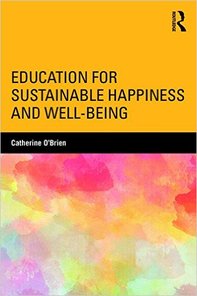
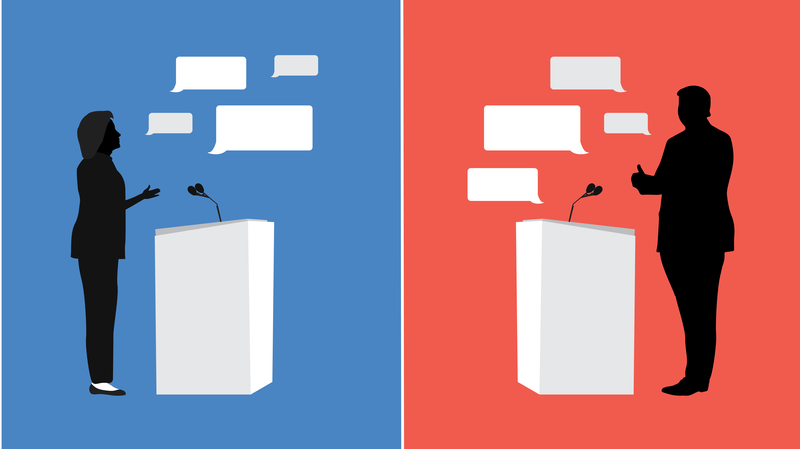
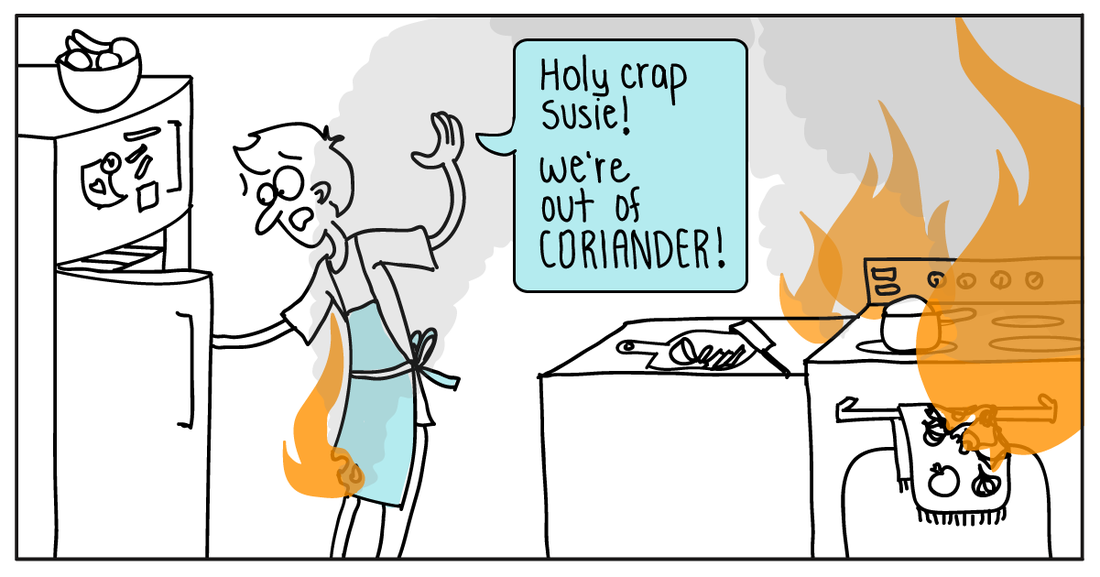
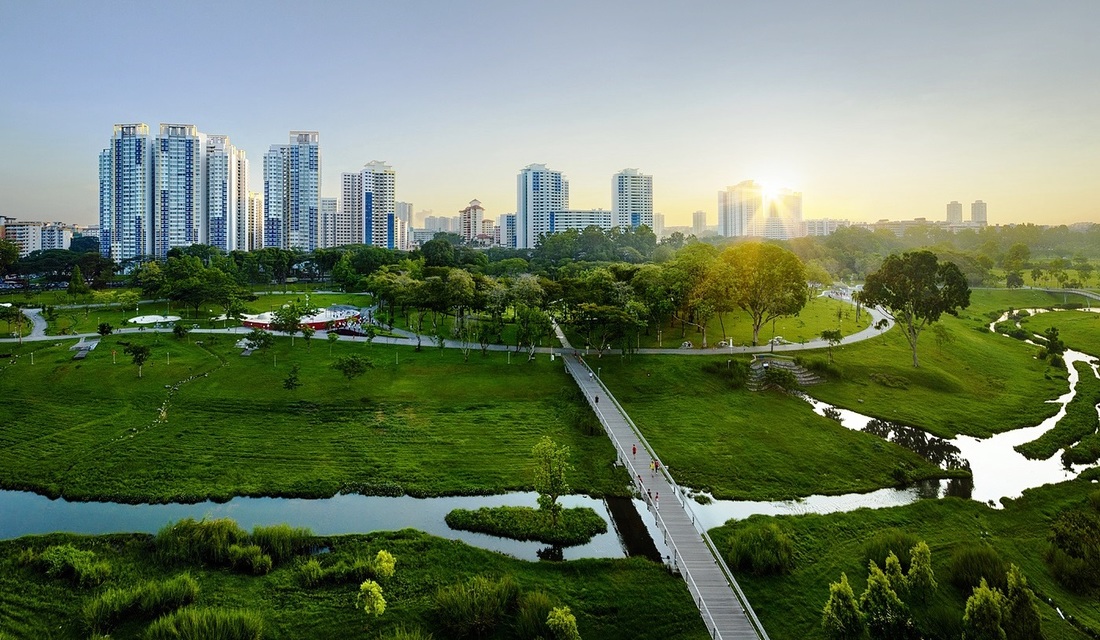
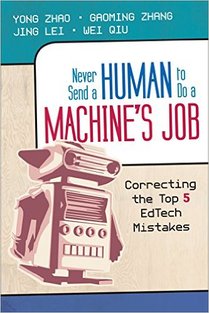

 RSS Feed
RSS Feed